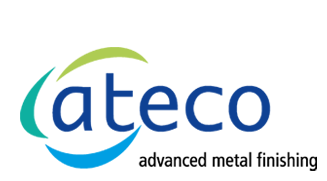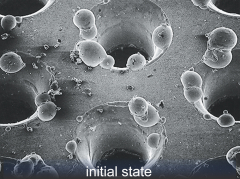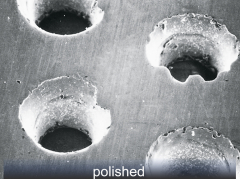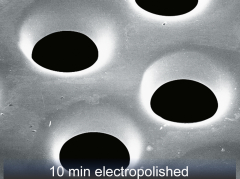Electropolishing
The technology …
Electrochemical polishing and deburring (electropolishing) decisively improves surface engineering and a number of qualities of metallic surfaces, more than any other method does. Simple and inexpensive high-quality functional surfaces for different demands are achieved in a single operation.
When exposed to direct current, metal is abrased from the anodic connected workpiece surface immersed in a special electrolyte. The abrasion means no stress and preferably focusses on microscopic unevenness. The surface will be smoothed and glossy in the microscopic range. This is, hence, called electropolishing. Macroscopic structures are preserved but, regardless of their form, smoothed and rounded on their surfaces. Edges and corners are reduced more, resulting in a reliable small-scale and microscopic deburring across the whole surface area (electrochemical deburring).
The results are reproduceable with high accuracy, so that even low-tolerance workpieces may be treated safely. Electropolishing releases oxygen at the workpiece surface. Therefore, there is no danger of hydrogen embrittlement.
The advantage of electropolishing …
In contrast to mechanical processing, electropolishing abrades the surface without mechanical or thermal stress, pollution or chemical damage. The obtained surfaces show the genuine qualities of the basic material and highest possible corrosion resistance. They are pure metal, evenly closed and inert.
The absolute surface size is much reduced and free of tensions or minute cracks. Larger cracks and material defects become clearly visible to the naked eye, enabling a reliable quality check.
In contrast to mechanical grinding and polishing, electropolishing first levels any microscopic unevenness, with increasing polishing time also macroscopic unevenness.
Properties of electropolished surfaces:
- pure metal without tension
- less physical extension
- free of burrs, spangles, scales, particles and gas inclusions
- smooth and free of minute cracks
- chemically inert
- glossy and appealing
Quality characteristics of electropolished surfaces:
- quality characteristics of electropolished surfaces
- improved corrosion resistance and endurance limit
- easier cleaning, reduced deposit formation and less bacterial growth
- less gas emission in high vacuum
- improved galvanic precipitation conditions
- optimum reflecting behaviour
- absence of particles and pyrogenic resistance
- less friction and wear
- less radioactive contamination and improved decontamination behaviour
- prevention of catalytic surface reactions
- improved HF conductivity
- optimum welding and soldering
- enabled quality control by detecting treatment failure and material defects






